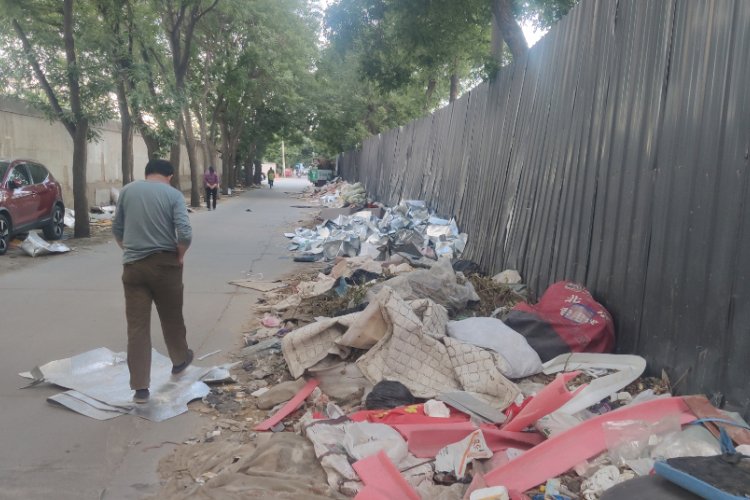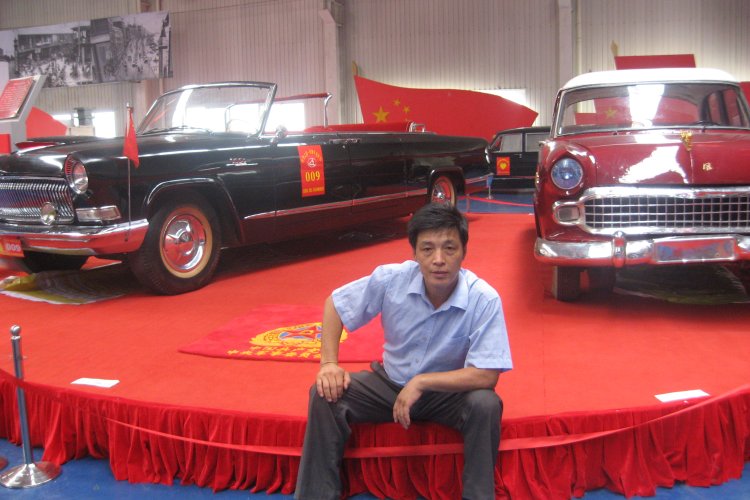Too Good to Be True? Maybe Clean Coal Isn’t All It’s Cracked Up To Be
"Clean coal” is not a contradiction in terms, says Murray Mortson. The CEO and president of Airborne Clean Energy, a Canadian company that operates in Beijing, hopes to revolutionize the way we think about China’s cheapest, most abundant, and most controversial fuel source.
“The general public considers coal to be a dirty fuel,” Mortson says, admitting that the power stations that burn those sooty dark lumps emit profuse amounts of pollutants like SOx, NOx, mercury, and CO2. But that can be changed with modern filtration technology at an effective cost, he maintains. “Coal can be clean, pollutants can be totally removed, and with advanced technologies, pollutants can be converted to valuable fertilizers.”
Not everyone shares his enthusiasm. Jesse Kharbanda, executive director of the US-based Hoosier Environmental Council, says: “We don’t think that ‘clean coal’ is an accurate term, as it suggests that the newest coal technologies have no environmental footprint.”
Other eco-NGOs have qualms as well. Below, Mortson responds to their feedback and makes the case for clean coal
Why focus on making coal clean? Huang Wei, a spokesperson at Greenpeace, tells us that China should instead “curb and reduce coal burning, because coal is China’s number-one air pollutant.”
China is the largest producer and consumer of coal globally, taking up half the world’s total coal consumption. On top of that, somewhere around 70 percent of all the energy in China for power generation comes from coal; without it, 70 percent of the lights and heat would have to be turned off.
But a recent report from the World Bank says China suffers 750,000 premature deaths annually because of pollution. If China doesn’t adopt systems for clean coal, the environmental damage could be astronomical. There are technologies that can reduce and almost eliminate the environmental footprint of coal combustion, making it a clean and environmentally friendly fuel.
How does that cleaning process work?
We’ve patented three filtering systems in series. When the emissions react with our first system’s cleansing chemicals, like dry sodium bicarbonate, pollutants like SO3 are instantaneously removed. Leftover pollutants will be further removed in the next filter, and so on. By the time the pollution goes through all three systems, the toxins are virtually gone – essentially all of the SO2 and SO3, and 98 percent of the mercury and NOx.
How do those toxins get turned into something that could fertilize our crops?
The SOx pollutant, for example, reacts with sodium bicarbonate cleansers in our filters and becomes sodium sulfate. We put it through a regeneration system that mixes it with ammonium, and it becomes ammonium sulfate, which is a known marketable fertilizer used worldwide.
This solves another problem. The sodium bicarbonate cleanser is very expensive, but it is widely recognized as the best chemical for pollution control. Our conversion process uses its byproduct to eventually create fertilizer, which can be sold to offset the costs. So the best chemical for pollution control can now be the cheapest as well.
That’s obviously a huge benefit, but what about other drawbacks? Beth Kemler, of the Chesapeake Climate Action Network, says: “So-called ‘clean coal’ technologies are a dangerous and costly distraction from real solutions. Wind and solar power are clean technologies that are commercially viable.”
There are issues with solar and wind energy. They’re both unreliable, being dependent on weather conditions. Solar panels are an eyesore, plus they can create a lot of glare from the sun. Wind turbines are noisy.
It would appear obvious that making the effort to get coal clean should be priority number one, as coal energy is established and used for all facets of industry. Wind turbines, for example, are often created from steel manufactured with coal-fired energy.
What’s the bigger challenge: cleaning the coal or cleaning its image?
Market acceptance is the largest challenge we face. Despite the fact we received two US Department of Energy awards, and were very favorably reviewed by the US Electrical Power Research Institute group, our technology is deemed too good to be true. So Chinese utilities want to see a demonstration first. We’re working on developing plants in Shandong and Shanxi to showcase the technology within a few years.
We want to get rid of all the Mary Poppins crap in the coal, the black soot. We want to get rid of all the SOx and NOx so that we don’t have acid rain. What we want is to make coal clean for the future.
This article originally appeared on page 57 of the January issue of the Beijinger.
Photo courtesy of Greenpeace
Related stories :
Comments
New comments are displayed first.Comments
![]() bluefish
Submitted by Guest on Mon, 01/07/2013 - 15:55 Permalink
bluefish
Submitted by Guest on Mon, 01/07/2013 - 15:55 Permalink
Re: Too Good to Be True? Maybe Clean Coal Isn’t All ...
Good grief, what a lot of fools there are in the world. This guy's totally right. If the main objection to coal is that it's dirty, and this process can make it nearly clean and lower the cost...what's the problem? Why is that a "distraction from real solutions?" It IS a real solution, Bethie.
Your blind hatred of coal–which kept grandparents all over Beijing from freezing to death these last few weeks–is irrational. Your "real solutions" are not viable at the present time at all. None of them work reliably, and both of them have their own problems. For example, did you know there are some species of birds in California that are in danger of being completely wiped out by all the asinine wind turbines they've got all over the place? (The ones that haven't just been abandoned) They're costly, inefficient, break all the time and are totally subject to the caprice of weather. The same is true of solar power. When I was a kid twenty years ago my uncle heated his outdoor pool for the cool Jersey summer nights with solar power. That was about all they could do. In 20 years that's still about all they can do.
Unless you're personally planning on paying for every poor Beijinger to ditch the coal and keep warm with an inefficient, costly technology that breaks frequently, it isn't going to happen. Cleaning the coal is an excellent, brilliant idea that might actually do something to help China's pollution problem without compromising people's need to...you know...SURVIVE. Private companies like this one invest in solutions that they know are possible and marketable. That they are NOT investing in solar or wind power despite all their fad popularity amongst recycling Nazis is an indication that they do not work. Stealing everyone's tax money to try to force them to work hasn't done a thing, and isn't going to.
Validate your mobile phone number to post comments.






